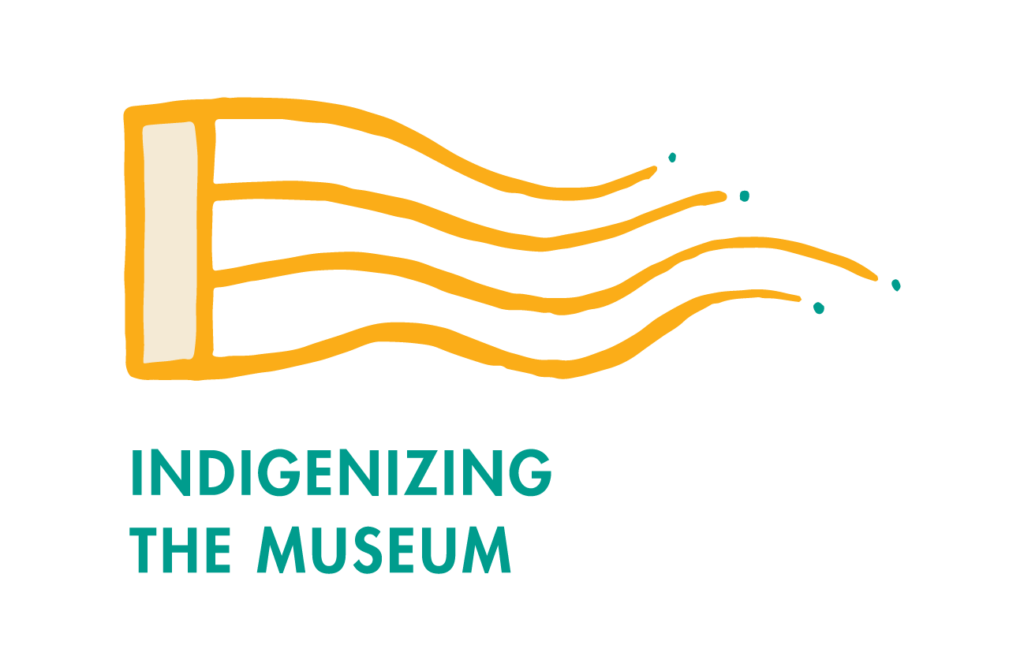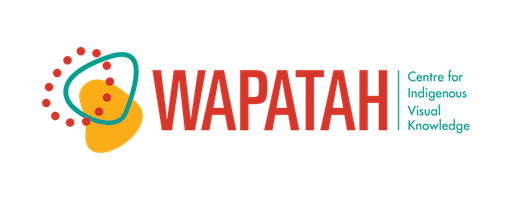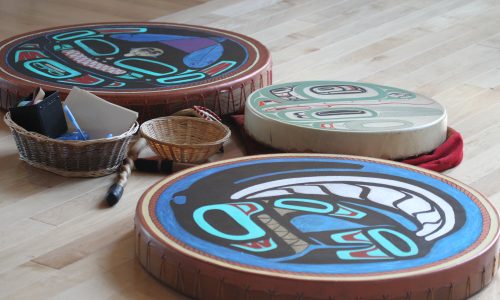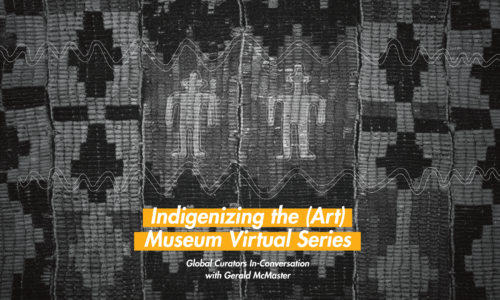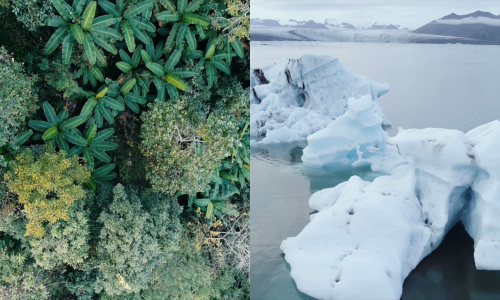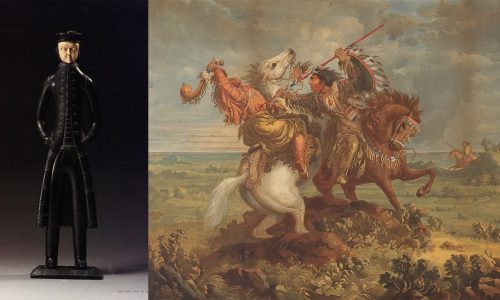Indigenizing the Museum.
In collaboration with Onsite Gallery and as part of the Virtual Platform for Indigenous Art, Indigenizing the Museum has been developed to create open dialogue and examine institutional collections and archives from around the world. With the aim of addressing questions around Indigenous curation, this event series reapproaches the relationship between community and museum through Indigenous art and visual ways of knowing.
“Connecting to communities, is connecting to stories”
(Dr. Gerald McMaster)
Indigenizing the Museum launched through a series of Virtual Roundtables in Summer 2020. Indigenous and non-Indigenous scholars, curators, artists, and knowledge keepers gathered through 4 Roundtable discussions around themes of language and lexicon, ceremony and protocol, and meaningmaking in digital spaces.
- Indigenizing The Museum: Language, Vernacular, And Lexicon with Bonnie Devine, Peter Jemison, Arni Brownstone, and Stephen Inglis
- Indigenizing The Museum: Voices, Stories, And Languages with Bonnie Devine, Stephen Inglis, and Arni Brownstone
- Indigenizing The Museum: Meaningmaking Through AR / VR with Jason Baerg, Kade L. Twist and Cristóbal Martínez of Postcommodity, and Mariah Meawasige
- Indigenizing The Museum: Ceremony in the Digital Space with Floyd Favel, Jennifer Wemigwans and Mariah Meawasige
Indigenizing the (Art) Museum
Wapatah and Onsite Gallery are very happy to announce that the conversation will be continuing this Spring 2021 through a virtual In-Conversation series: Indigenizing the (Art) Museum with Gerald McMaster. Each week we will be joined by a different curator from (art) museums around the globe, with the aim of addressing questions around Indigenous curation, ceremony, and research in digital spaces.
To learn more about the upcoming virtual In-Conversation series, please visit our Indigenizing the (Art) Museum Page!
..
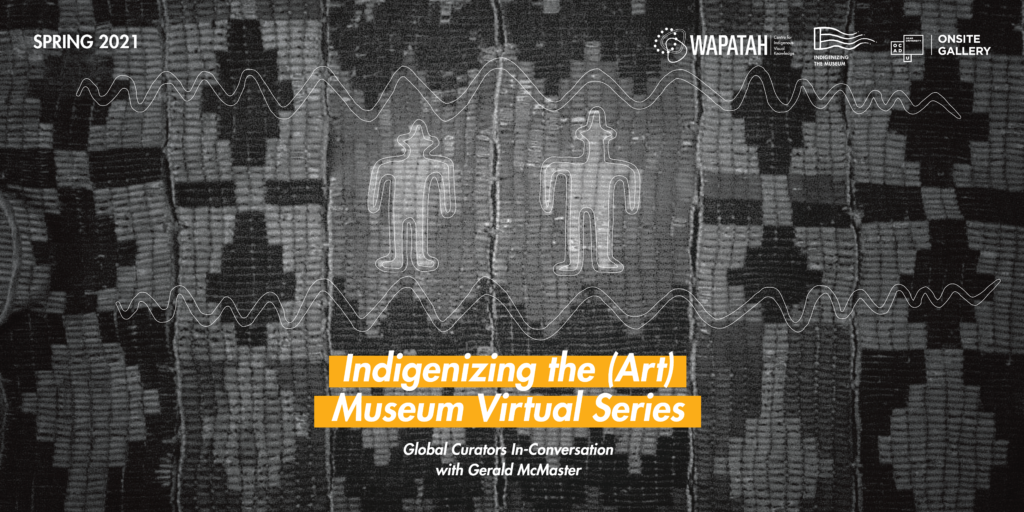
Wapatah & Team Contributors
 |
Dr. Gerald McMasterDr. McMaster has over 30 years international work and expertise in contemporary art, critical theory, museology and Indigenous aesthetics. His experience as an artist and curator in art and ethnology museums researching and collecting art, as well as producing exhibitions has given him a thorough understanding of transnational Indigenous visual culture and curatorial practice. His early interests concerned the ways in which culturally sensitive objects were displayed in ethnology museums, as well as the lack of representation of Indigenous artists in art museums. As a practicing artist, he offered a way of staging hitherto decontextualized objects different from the traditional formats favoured by exhibition designers trained in Western traditions; instead, his was an approach that rested on Indigenous epistemologies. These early stages in developing an –Indigenous visuality led him to study concepts in visual, experiential and spatial composition. His exhibition Savage Graces (1992) challenged long held views, and played a major role in breaking down conventional barriers around where art should be practiced, while also demonstrating that art is not tied to ethnicity. As a curator, he focused on advancing the intellectual landscape for Indigenous curatorship through the foundational concept of voice. He curated, for example, an exhibition called Indigena (1992) that brought together unfiltered Indigenous voices for the first time. Until then, non-Indigenous scholars had dominated discussions of Indigenous art, history and culture. McMaster made the point that Indigenous artists and writers were more than capable of representing themselves in articulate, eloquent ways. Over the past 20 years, he has continued to refine the idea of voice, leading him to ask: How can Indigenous voices continue providing new perspectives on well-researched subjects such as art, history and anthropology? Throughout his career, his championing of the mainstream value of Indigenous art, among other things, has led to his being chosen to represent Canada at a number of prestigious international events. These include his serving as Canadian Commissioner for the 1995 Venice Biennale, and as artistic director of the 2012 Biennale of Sydney, and curator for the 2018 Venice Architecture Biennale. Dr. Gerald McMasterDirector, Tier 1 Canada Research ChairDr. McMaster has over 30 years international work and expertise... |
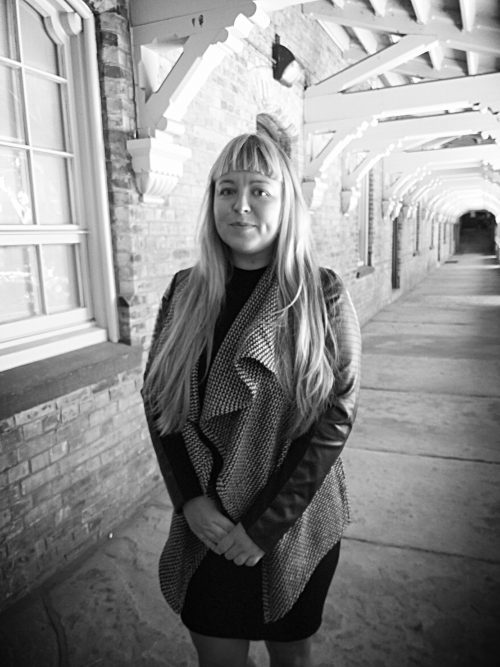 |
Natalja ChestopalovaNatalja Chestopalova is part of the Ph.D. in Communication and Culture Program at York and Ryerson Universities in Toronto. Her research is informed by the study of digital media, archival aesthetics, phenomenology, and psychoanalysis, and focuses on the transformative sensory experience and multimodality in film, graphic novel medium, and theatrical site-specific performances. With the support from the Social Science and Humanities Council of Canada (SSHRC), she has presented at multiple Canadian and International events, including roundtables & panels on new media archives, visual storytelling, and preservation of ephemeral cultural narratives. Her recent works include papers and multimodal installations on archives-of-trauma in non-fiction graphic narratives and theoretical developments in the Lacanian concept of the voice and voicelessness. Her publications appear in the White Wall Review, Canadian Journal of Communication, Dialogue, The Routledge Encyclopedia of Modernism, Sound Effects: The Object Voice in Fiction, and an essay volume on the Freudian theory of afterwardness and archives-of-feeling in comics of Alison Bechdel. Natalja ChestopalovaResearch Project ManagerNatalja Chestopalova is part of the Ph.D. in Communication and... |
 |
Brittany BerginBrittany Pitseolak Bergin is a research assistant at Wapatah Centre, OCAD University. Raised in Southern Ontario, her family is from Kinngait, Cape Dorset. Inspired by the artists in her family and community, including her great-grandmother and namesake Pitseolak Ashoona, Brittany’s focus at Wapatah is centred in community engagement as she continues to support major projects and outreach initiatives. Her work has been integral to the success of projects such as the Virtual Platform for Indigenous Art, Arctic/Amazon Symposium, Arctic/Amazon: Networks of Global Indigeneity exhibition and publication, and Indigenizing the (Art) Museum Virtual Series. Her most recent conferences include the Frontend Conference (Munich) and Inuit Studies Conference (Montreal). Brittany BerginResearch AssistantBrittany Pitseolak Bergin is a research assistant at Wapatah Centre,... |
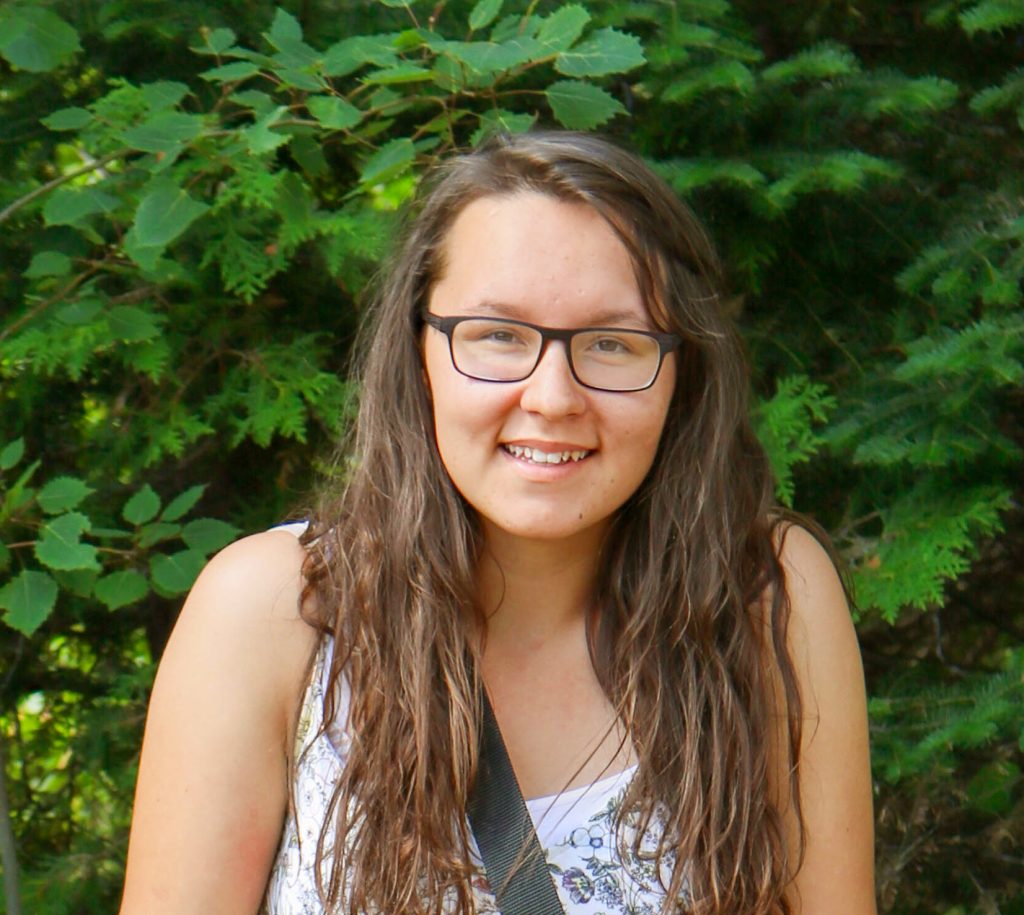 |
Mariah MeawasigeMariah (Makoose) is an Anishinaabe/settler and creative from the northern shores of Lake Huron. Her practice specializes in graphic design but questions the bounds of communication through illustration, sculpture, video, and performance. She created the logo for the Wapatah Centre for Indigenous Visual Knowledge and is currently working on the centre’s visual identity. Through her love of stories and storytelling, Mariah’s body of work aims to explore temporalities and place, map memories, and build relationships. Mariah MeawasigeResearch AssistantMariah (Makoose) is an Anishinaabe/settler and creative from the northern... |
